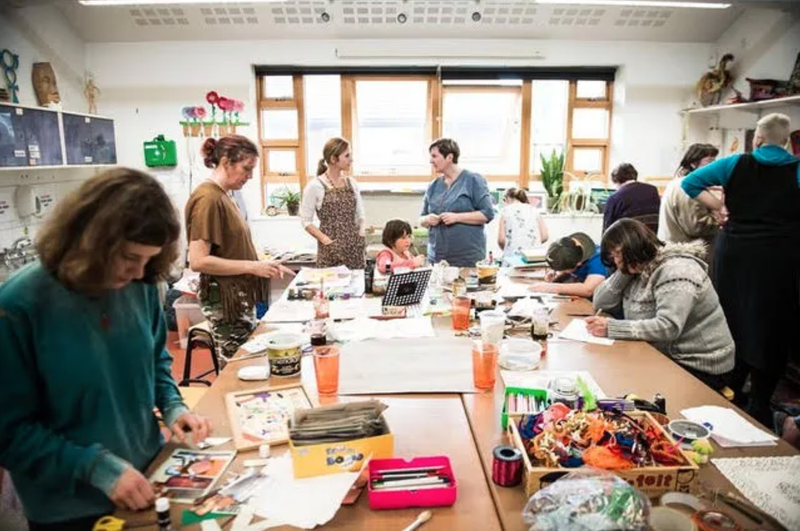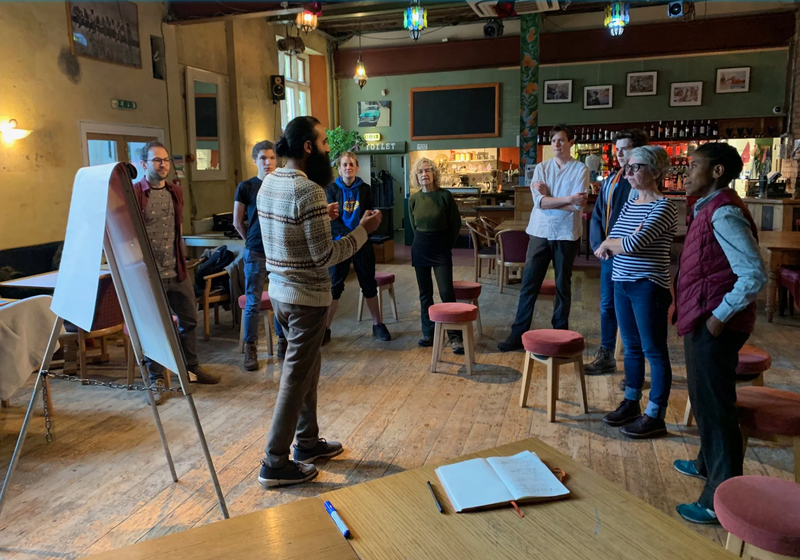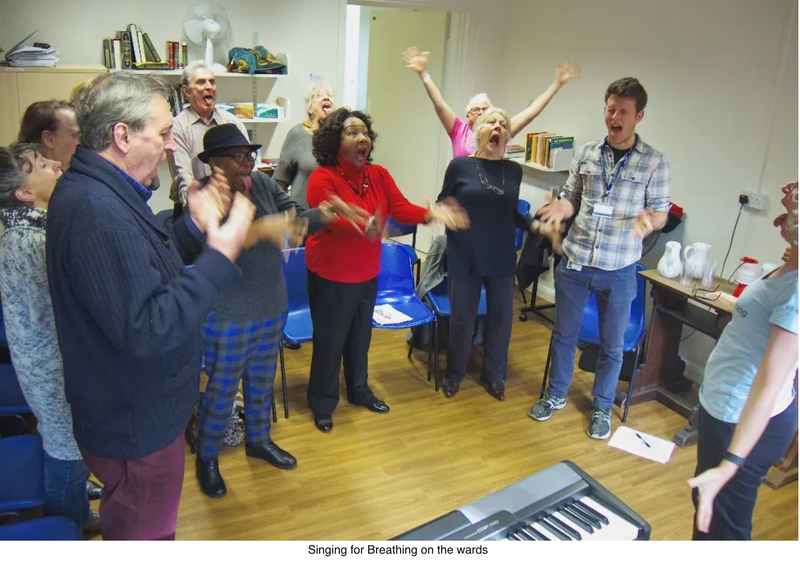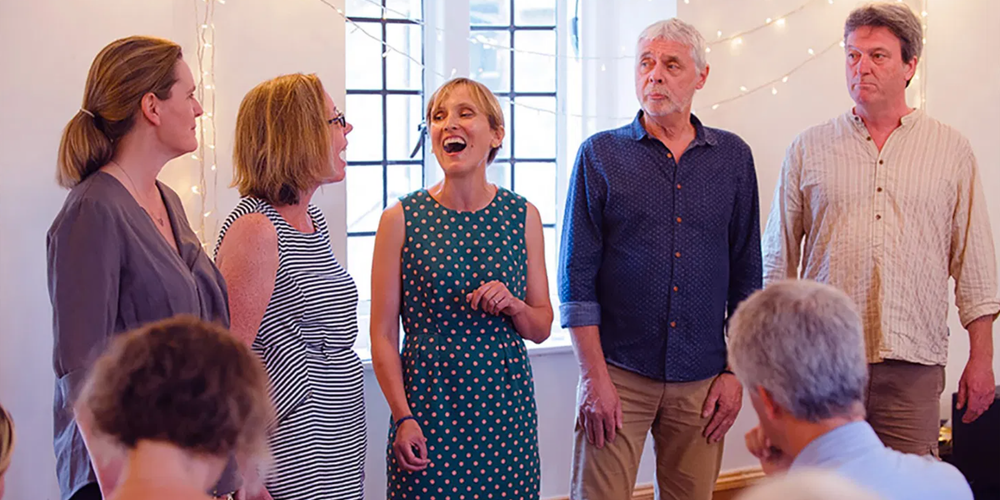To Engage:
to participate or become involved in
to establish a meaningful connection with
What is public engagement?
The Wellcome Trust – our funders at Life of Breath – describe public engagement as a vital part of the research process. Public engagement helps researchers to generate, co-develop and refine ideas, involving the public with projects as they unfold, and taking the results out into the world. The aim is to bridge the gap between the “ivory tower” (academics tucked away in institutions doing things that may seem incomprehensible or irrelevant to society) and street level where people go about their business; getting born, living, playing, working, loving, breathing and dying.
It’s a multi-level and interdependent process; empowering people to get involved and take an interest in research and innovation, and at the same time ensuring that funded research is grounded in what people think is important and useful, from a broad variety of perspectives. In the case of health research (in theory, at any rate) investment in this relationship results in a collaborative process that steers the direction of travel for research funding, policy change, evidence-based practice and cost-effective delivery of services.

For an excellent description of what public involvement is (and is not) see the article What is public involvement in research? by the National Institute for Health Research’s (NIHR) INVOLVE national advisory group.

Public engagement (PE) and the Life of Breath

The Life of Breath team is eclectic, including researchers, practitioners and clinicians from wide-ranging disciplines. Mirroring this breadth of interests, and because we have been based across two sites (the Universities of Bristol and Durham), we’ve had the opportunity to engage with the public through a range of creative and community projects about breathing and breathlessness across these diagonally-placed UK regions. Our PE projects have included dance, classical singing, rap, poetry, art, yoga, mindfulness, narrative-writing, theatre and puppetry as well as public lectures, panel discussions and consultations with doctors, physiotherapists, respiratory nurses and neuroscientists. We’ve engaged with people at hospitals, schools, community centres, GP surgeries, street fairs and shopping malls to share our work with the public and to learn from them. We set up our exhibition “Catch Your Breath” in Durham’s Palace Green Library,

Bristol’s Southmead Hospital and Central Public Library, and the hallowed halls of the Royal Society of Physicians in London, and members of our team have gone to pretty much every conference possible, across fields as diverse as history, neuroscience, philosophy, respiratory medicine and Arts in Health. Our research has asked ontological questions about breathlessness in order to open up (rather than pin down) this complex experience, and in doing so we have begun to prod the mysterious membrane that separates the sick from the well, the patient from the professional, the chronically breathless person from the person who gives their breathing no thought at all because it is the invisible gift that keep on giving….. until, eventually, it does not.
Life, breath, death
Coming relatively late to research in my career (in my case, as a music therapist and yoga/mindfulness teacher working in supportive and palliative care settings), I am motivated by questions thrown up over 15 years of clinical practice with people nearing the end of their lives.
Being part of Life of Breath has allowed me to begin to explore areas of complexity that the patients I’ve worked with has said is important to them, yet not always felt to be valued or addressed in their interactions within the healthcare system: I’m breathless and anxious. I’m scared about what’s going to happen next. How can I cope? What does it mean?
For family caregivers the questions are related, and just as urgent: He/she can’t breathe, I’m frightened. What’s going to happen? What can I do to help? What does it mean?
A third, and even less acknowledged area has arisen from my personal and professional interactions with healthcare professionals (HCPs) in end-of-life settings. What can I do to help patients’ suffering when I can’t “fix” the problem with medication? I feel anxious, tense and even breathless myself when encountering this kind of complexity. What does it mean? This resonates because I have also asked similar questions during my practice in a neurological hospital, a care home and a hospice over the years, and for which my training as a creative arts psychotherapist did not really prepare me. However, the skills I’ve learned and practice as a yoga and mindfulness teacher have helped enormously in keeping me steady, as well as providing practical tools that I’ve been able to share with patients and caregivers to help them self-regulate breathing, anxiety, pain and fear.

I’ve used my time at Life of Breath to explore these complex areas of vulnerability, and the possibility of using embodied techniques to develop resilience and even manage breathlessness. This led to a small collaborative study with health psychology colleagues at the University of Bath (paper in preparation) using reflective group interviews with multi-disciplinary teams to understand the experiences of HCPs working with suffering and complexity towards the end of life. Breathlessness was reported as one of the trickiest and most distressing areas to manage. We also asked what teams felt they needed in terms of psycho-spiritual support and training (lots more please) and gave them a “taster” session of Breath-Body-Mind integration (BBMi) training which I’ve been developing over several years.
So, during the Life of Breath, I’ve had the opportunity to consult with the public (patients, caregivers) and with researchers and healthcare professionals interested in breathing and breathlessness. These experiences have generated new questions. What is the scale and complexity of need? Why do some people feel so much more scared than others when they are breathless? Why do Breath-Body-Mind integration techniques seem to work so well? Can other people deliver them as effectively? Would an app do the job? If HCPs learn these skills, how can we measure improvements in the way they deliver care, and how does this affect patient outcomes and healthcare costs?
Public engagement activities have included joining a local COPD support group to find out what they think is important (anwer: ways to live as well as possible with chronic breathlessness) and subsequently, to introduce BBMi to the group. I was also invited by anthropologist and member of Life of Breath team at University of Durham, Krzysztof Bierski, to teach a session of BBMi at the “Movement Playground” in Newcastle. This series of creative movement sessions aimed to explore alternative and enjoyable ways of exercising with compromised breathing. The message I took back from people attending – mostly ex-smokers living with COPD – was that with the right encouragement and opportunity, these patients want to and can re-discover a positive relationship with their bodies. Our paper about this is currently in review.

Last summer I found myself at the Royal Society Summer Science exhibition with colleagues from Breathe Oxford. This team of neuroscientists led by Professor Kyle Pattinson were illustrating the relationship between the lungs and brain. I was there as a roving researcher/helper to not only sing (illustrating the use of lungs for pleasure and improved function) but to teach drop-in BBMi sessions for the public, and to answer questions generated by our stand and workshops. What was interesting was the general thirst for information about the mechanics of breathing (even this scientifically-aware audience were unaware of how breathing works) and also the need for education in how to breathe freely and thus positively affect one’s own mood. The bi-directional relationship between anxiety and breathing difficulties is not generally understood. One man in his 80’s told me he’d had chronic asthma and felt ‘tense’ all his life, and never knew how he could help himself beyond using his inhalers to feel better in body and mind. All I did was take him into a corner and showed him how rigid his diaphragm and stomach muscles were, and then how to relax his jaw, shoulders, belly and pelvic floor in order to allow his breathing freedom. This feeling of release – physical and emotional – was clearly a revelation.
Our recent Catch Your Breath Bristol events programme included a BBMi session open to anyone at Southmead Hospital. We had patients, their children, doctors, nurses, a psychologist and office-workers dropping in throughout the day. Similar to the other public workshops and pop-up experiential sessions I’ve run, attendees were curious about the breath, knowing there was some important link between the physical body, the emotions and the thinking mind, yet without being able to articulate or “hack into” its potential. Feedback comments included:
“What a nourishing treat in my day working here at Southmead hospital to connect with my breath and with others and their breaths, with being a human being (not just a human doing)”
“Very helpful session. I would like to be able to reproduce this for our patients, let them feel this OK-ness”
“Thank you for this grounding session. I have had excellent treatment for my illness here but this has given me a breathing space to reflect and relax”

What next?
The public engagement activities I’ve been involved with have been fascinating and heartening, motivating me to try and continue with this work beyond the end of the Life of Breath project. I believe there is a lot more research necessary to understand and support the needs of breathless patients, particularly those with end-stage illness experiencing frequent crises, hospitalisations, and lacking social support. My first-hand experience is that there are simple non-pharmacological techniques and ways of relating that can significantly reduce the anxiety and suffering around breathlessness, and that we could be training up the HCPs who interact with this population (respiratory nurses, A&E professionals, paramedics, physiotherapists) to recognise and meet the primal need for safety that breathlessness triggers and exacerbates.

I also think there is work necessary to understand whether early trauma and adverse childhood experiences are relevant to older adults’ breathlessness experiences, and how we can effectively meet and treat this both during the presenting crisis, and to spot and support these people in the community. In talking with patients, families and professionals about these ideas I have only met with interest, recognition and encouragement, but now have to secure funding to take this idea to the next stage. Our paper “Objects of safety and imprisonment: breathless patients’ use of medical objects in a palliative setting” is currently in review with the Journal of material culture (Binnie, McGuire, Carel) which introduces our thinking about attachment theory, safety, sense-making and the relationship with medical objects commonly used by breathless patients with advanced illness.

The Life of Breath project has been like a spider plant, producing off-shoots that will now continue to develop ideas and work on breathing and breathlessness, even though the “mother” is winding up. As the Buddhists would say …. all things arise, blossom, decay and dissolve. Respiration is the experiential practice of this philosophy. It has been a huge honour and pleasure to be part of this amazing conspiracy of breathers (con/with, spire/breathe) for the last few years! Thank you to all those who have taken part in our public and professional engagement projects, to our PI’s (Havi Carel and Jane Macnaughton) for the generation of the project, and to Wellcome for supporting the Life of Breath to bloom.

